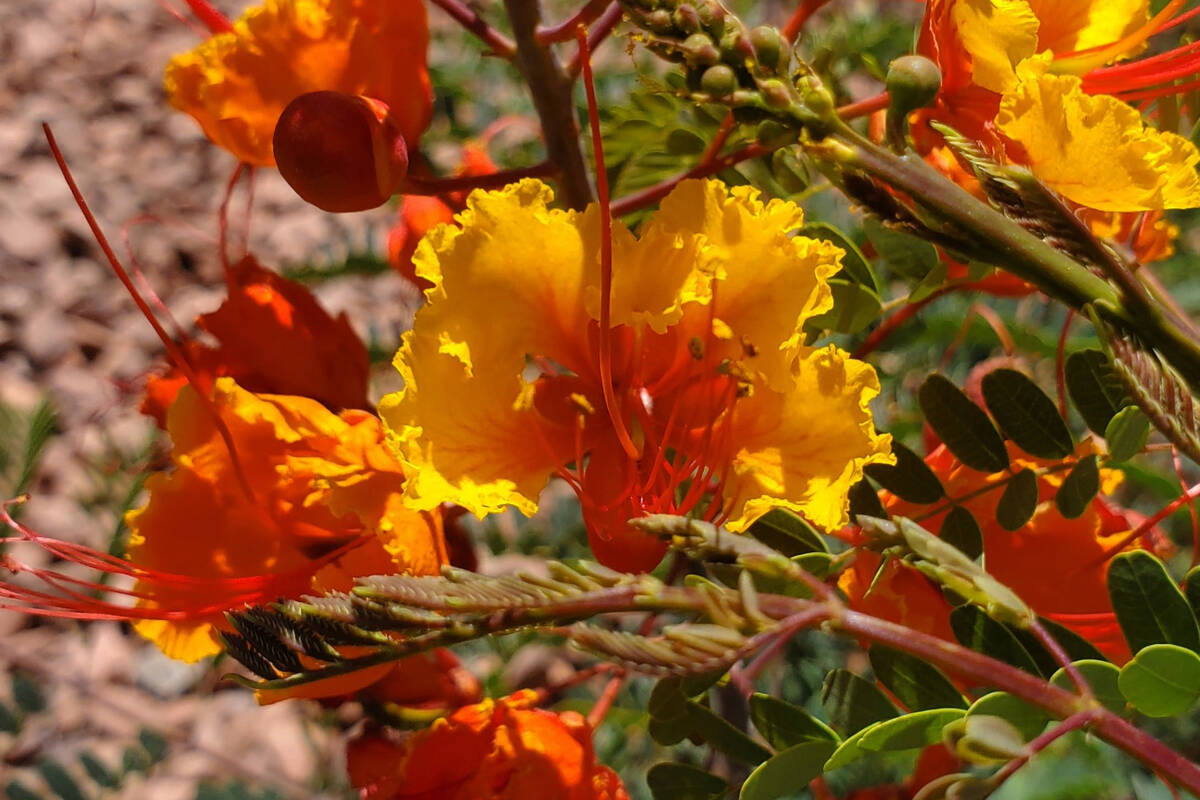Q: We have three bird of paradise plants in our backyard. They were in bloom when we planted them five or six years ago, and they bloomed the following year as well. They look beautiful and healthy, but they have not bloomed again. Is there something we can do to encourage them to bloom?
A: Wait and don’t do anything (including fertilizer applications). These plants were happy (flowering) living and growing in containers. Once they were planted, their roots explored the surrounding (amended) soil to get established. When they are young and newly planted, it’s normal if they produce leaves and no flowers for a season or two. They reach a certain size, or maturity, to begin flowering again. If the plant gets enough sunlight, it will flower, naturally, when it gets to the right age (or size) outside of the container.
They might also stop blooming if they are getting lots of nitrogen fertilizer. Lots of nitrogen (the first of three numbers on a bag of fertilizer) kicks them into a growth surge and prevents flowers. If flowering is wanted and you feel the plant needs a fertilizer, use one with a first number that is low or nonexistent. If they were recently planted with rich compost or were fertilized recently that might delay their flowering. If they had winter damage they might not flower again until they fully recover and regain their size.
They should get full morning sun if planted outside. Avoid the summertime heat created by planting them too close (less than 5 feet) to west- or south-facing exterior walls. When planted near walls, avoid watering on sides near the wall.
Q: Grubs: Can you tell me how to get rid of them?
A: Without some pictures of what you are talking about it is difficult to make recommendations. Usually (but not always), grubs are part of a beetle’s life cycle; the larger the insect, the bigger the grub. (I prefer to use the term “life cycle” as opposed to “immature form” of any insect.)
Some grubs have legs while others don’t. We usually call the types with legs, white grubs. They are frequently creamy white in color.
The type of insect determines the type of grub. For example, the type of beetle called a chafer has grubs with legs.
Most grubs feed on plant roots. The larger the grub, the larger the roots they can feed on. The larger the grub, the more damage they can do in smaller numbers.
It is best to control grubs on valuable plants when the grubs are small. If these grubs are in a lawn, then water the lawn first for better grub control. Watering a lawn first moves grubs closer to its surface, where they are easier to control.
Beneficial nematodes are tiny worms that invade and inhabit grubs. They can be bought from a home and garden center. Release them in problem areas in early morning or late afternoon to avoid the heat of the day.
Milky spores is a natural bacterium effective only against the Japanese beetle type of grubs, which we don’t have yet in Southern Nevada. Milky spore control may not work in Southern Nevada for this reason. Milky spore disease can take years to establish in the soil, and if you choose to use chemical control it may not work at all.
The surest way to control grubs is to apply chemicals, or insecticides, at the right time. Many of these insecticides will have “grub control” on the label. Otherwise, you must read the label’s small print.
Insecticides that contain imidacloprid, thiamethoxam or clothianidin are oftentimes labeled for controlling grubs, but you have to read the label to be sure.
Insecticides are usually applied around the middle of April in our area. It is also important to apply any systemic insecticides after the plant has finished flowering.
Q: This cactus looks just like a prickly pear, but it has no “prickles.” Is the fruit edible? This one had a few fruits, which the birds seemed to love.
A: Yes, it is prickly pear cactus. If the birds liked the fruit, then the fruit is a good one. Some nopal cactus produce better nopales (the vegetable part) and tunas (the fruit part) than others. Birds know.
To get the pads succulent enough to use for use as a fresh vegetable of for cooking or pickling, the growth must be pushed by irrigating them about every three weeks. Add nitrogen in the spring, either as a fertilizer or manure.
When watering, put a basin around the plants about 4 inches deep and fill the basin every three weeks to push their growth.
Harvest the pads when they are about the size of a large hand but still succulent.
Bob Morris is a horticulture expert and professor emeritus of UNLV. Visit his blog at xtremehorticulture.blogspot.com. Send questions to Extremehort@aol.com.

